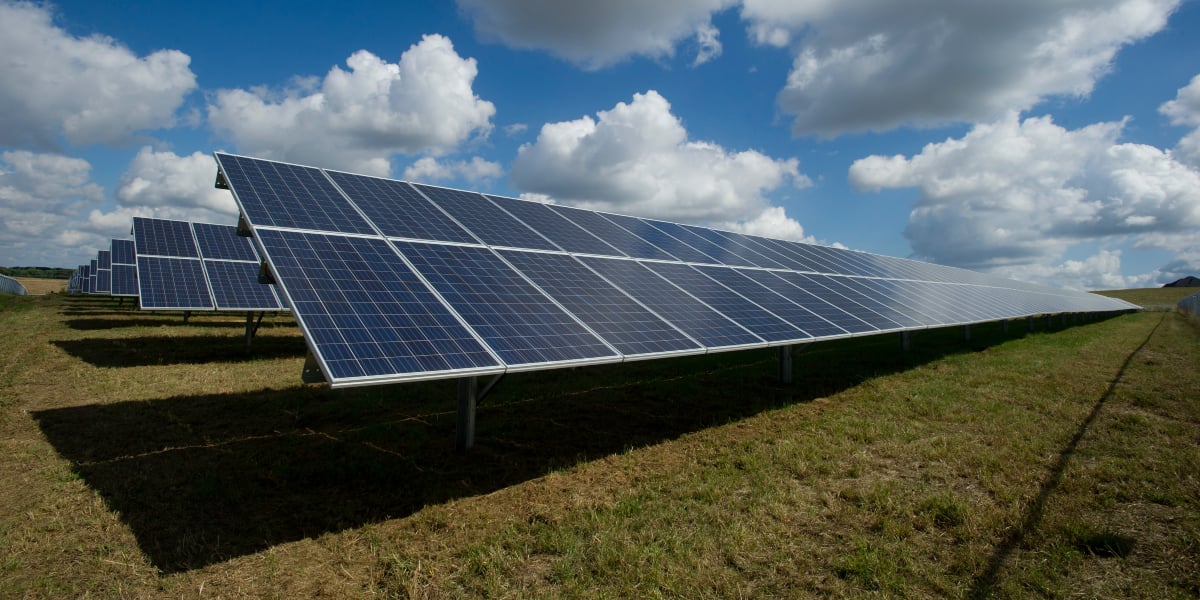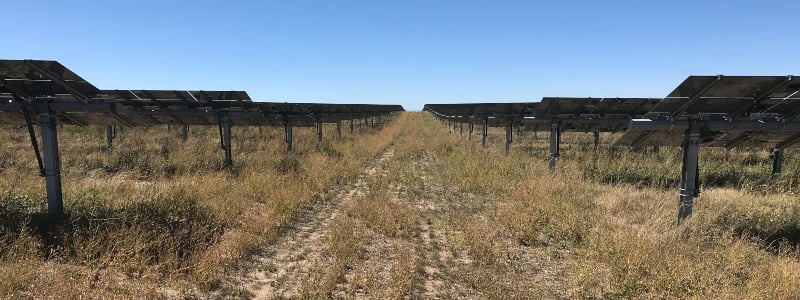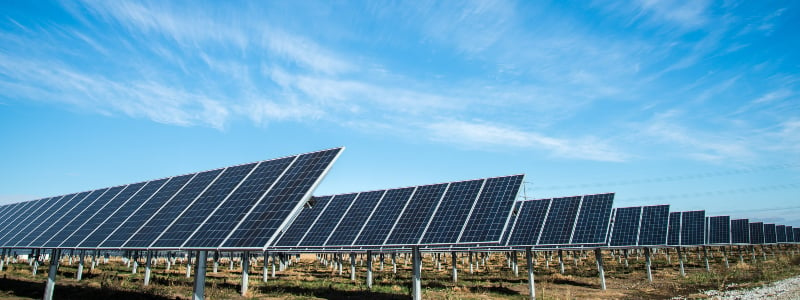Solar Farm Land Requirements
November 13, 2019

Content updated on April 13, 2023
If you’re a landowner, you have likely already considered the pros and cons of developing a solar energy project on your property. Unfortunately, far too many landowners assume that their land is unsuitable for solar, believing that the site needs to be perfectly flat, clear, and dry. While those are some advantageous attributes, there’s often a lot more nuance involved when a developer is looking to lease land for a solar farm.
Most sites aren’t “perfect”. When possible, developers will come up with creative solutions to make a project work.
If you’ve ever wondered: “is my land a good fit for a solar farm?” Here’s what solar developers look for in a site.
How Big Is a Community Solar Farm?
Community solar (or “shared solar”) farms are often medium scale projects that require 10-20 acres, or more.
The size of a solar farm can vary greatly, depending on local legislation, utility policies, the electrical constraints of nearby infrastructure, or even the business model of the solar developer. As a general rule of thumb, each direct current (DC) megawatt requires approximately five acres of buildable land.
Planning Solar Farms
The first step for any solar developer is vetting the topography and landscape of your site.
Landscape Considerations for Solar Farms
Generally speaking, the flatter a site is, the better it will be for solar development. However, developers have been able to construct projects on sites with a gentle grade and even rolling hills. In fact, it can be beneficial for sites to have a slight slope to the south or east, as this will increase the system’s exposure to the sun. In certain instances, developers will even consider doing some earthwork or light tree and shrub removal to prepare a site.
Topography Considerations for Solar Farms
Significant floodplain or wetland issues can prevent solar projects from getting off the ground. Solar farms cannot be constructed within wetlands and usually require additional due diligence to build on a 100- or 500-year floodplain. If you’re not sure if you have wetland or floodplain limitations on your site or think that the maps provided by federal agencies are incorrect, you can ask a developer to work with the appropriate agencies to verify the actual hazard boundaries. It is certainly possible for developers to build around these hazards, however, it is generally considered a non-starter for most project development.
Additionally, solar farm development is prohibited on land that is designated for preservation or protected due to the presence of a wildlife habitat.

Constructing Solar Farms
To construct a solar farm, developers must work with your local authority having jurisdiction (AHJ) to obtain the appropriate permits, including:
- land use
- zoning
- grading
- construction
- electrical
Additionally, if your land is located within a jurisdiction that has established a protocol for permitting solar farms (such as VA, MD, DE, NJ, NY, PA, OH, IL, MI, CA, NM, and TX) or if you’re willing to work with developers to identify appropriate permitting requirements, it is more likely that you will experience a smoother permitting process. While most cities and counties have either created solar specific rules or have qualified solar within an appropriate existing category, other AHJs require an overly cumbersome permitting threshold. Solar developers are always willing to work with your local AHJ to develop appropriate permitting requirements, guidelines, and procedures.
Solar Farm Land Requirements
Whether a developer is building a project on ten acres or a thousand, they must locate their project near a utility’s infrastructure.
For a community solar farm, developers prefer to be adjacent to three-phase distribution lines and close to a substation. Once a project is constructed, it will connect directly to (or “tap into”) these distribution lines to transfer the energy generated by the solar facility to the electrical grid. If there are no distribution lines near a site, a developer must pay to install lengthy distribution extensions to reach the site. This adds significant cost to a project and can prevent a site from being a viable fit for a project.

Leasing Land for a Solar Farm
Most importantly, we must determine whether or not solar is a good fit for you.
There are many benefits to leasing your land for solar farm development. Most landowners who lease their land to solar developers do so for financial reasons. With solar, you can hedge against the risk of unpredictable weather patterns. Leasing your land for solar farm development generates a reliable stream of revenue, diversifies your portfolio, allows former farmland to rejuvenate, keeps the land in your family, and brings cleaner air as well as energy resiliency to your community.
Solar may make sense if: you have historically utilized the land for lower-value commodity crops, you have limited access to water (often referred to as “water rights”), or your land is rocky or contains unproductive soil. Additionally, solar can be a good fit for industrial or commercial properties with limited site access, preventing development opportunities. Solar is a great option if your land is nearby feedlots, sewage or waste-water treatment plants, storage facilities, or other commercial-industrial uses. Whatever the site has historically been used for, it is key that the landowner is able to lease their land for the long-term contract that is typically required for a solar farm.
If you’re interested in learning whether or not solar is a good fit for your land, please reach out to us at Land@pivotenergy.net. Our project developers are happy to look at your site and get this process started.

.jpg?width=123&name=Angie%20Agrivoltaics%20Award%20(HQ).jpg)


.jpg?width=400&name=Angie%20Agrivoltaics%20Award%20(HQ).jpg)
